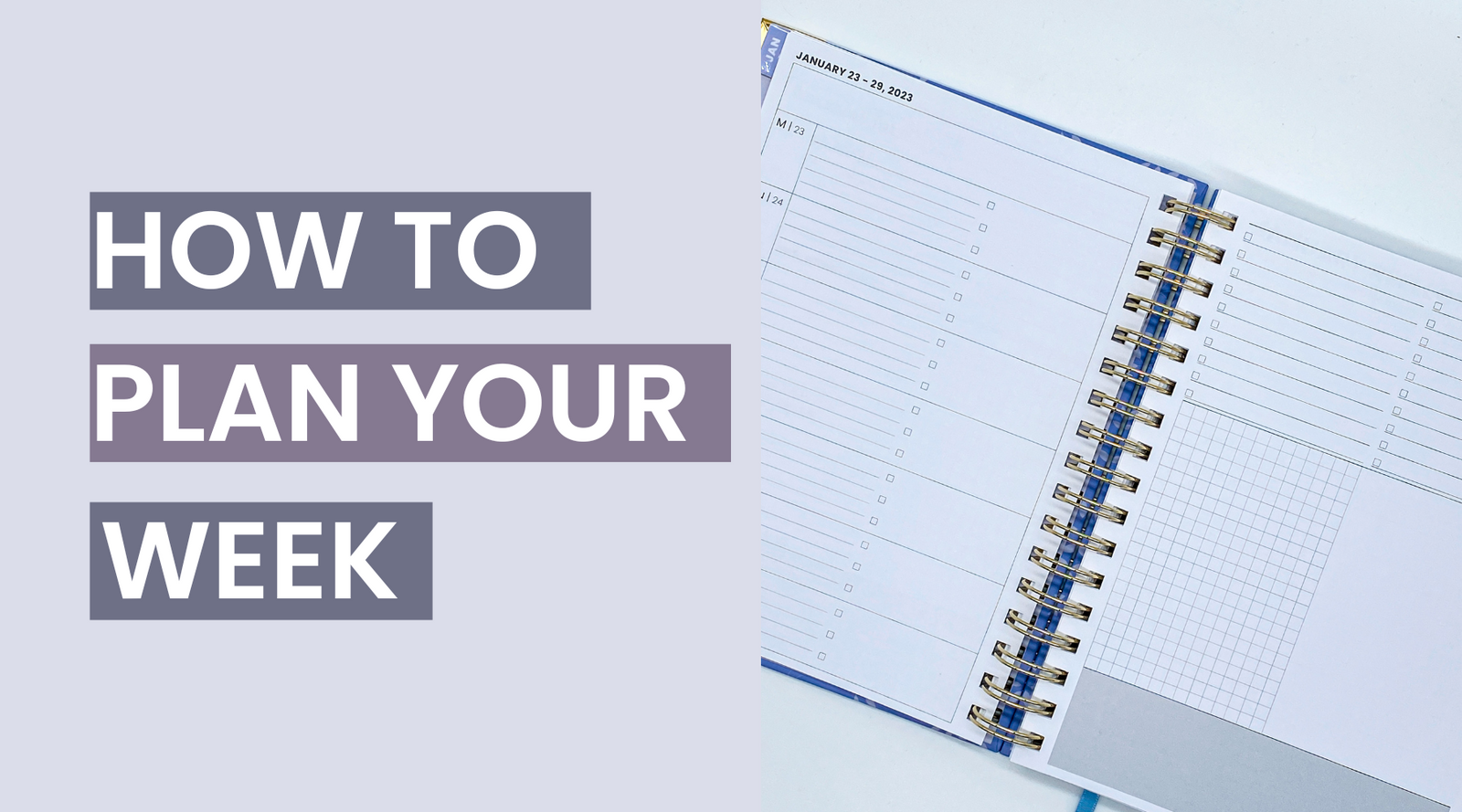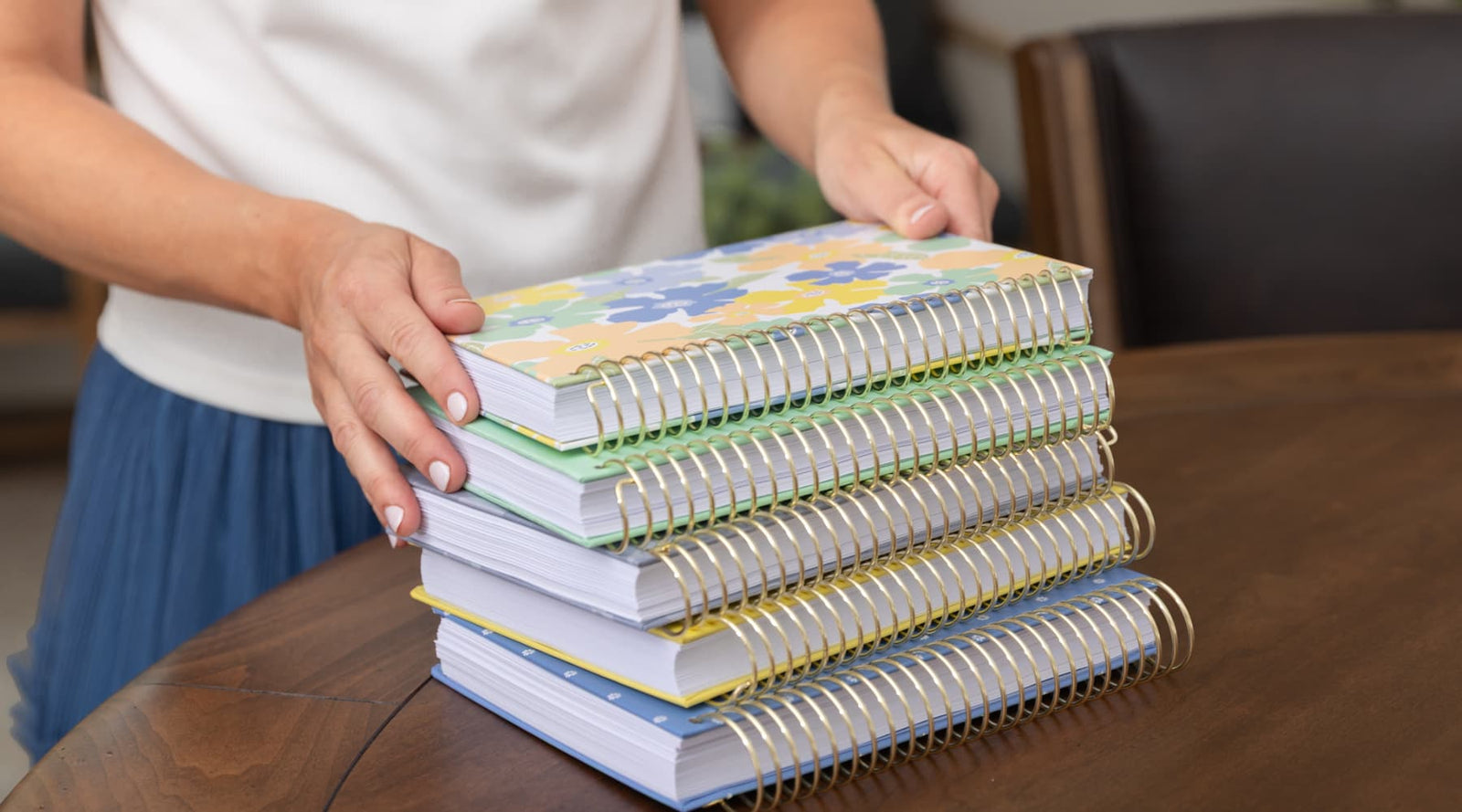The dreaded Monday morning has arrived.
You’re determined to start the week out organized, but you’re frozen to start. The blank boxes and lines feel overwhelming. Maybe you’ll just check Instagram first...and now it’s Friday.
Another missed week of planning. Does that sound familiar?
Sometimes, It can be intimidating to plan your week if you don’t have a process or loose guidelines to follow.
Look no further, your guide has arrived!
Full disclosure, I’m not an expert planner. I’m not trained in project management, or have studied under the late Stephen Covey. I’m not going to tell you about the scientific ways of planning and productivity. But I do have a system that works for me - and has been helpful to others - and that’s good enough.
The Case for Planning
Why even plan in the first place? As mentioned in my Planners for Newcomers blog, people plan and/or use a planner for different reasons. The most common is to stay on top of things, and get things done. Beyond that, planning lets you take control of your life and schedule. It allows you to move the needle forward on things that matter to you. It’s about being proactive instead of reactive. I have a magnet on my fridge with this quote:
This is your world. Shape it or someone else will. - Gary Lew

Planning is about shaping your world.
Planning, like anything, gets easier with experience. It’s also deeply personal, and you will find your own groove and process that works best for your personality. Until then, I hope my process will be a good starting place.
Pre-Planning
Before we get back to that dreaded blank week in your planner, there’s 2 pre-tasks to do:
- Pick your ideal plan time
- Review & reflect on the previous week
Pick Your Ideal Plan Time
Do not fall into the habit of trying to quickly squeeze in a planning session 5 minutes before you start your day on Monday. This weekly planning practice is going to set you up for your entire week, so give it the respect it deserves. I recommend 30 minutes of devoted planning time.
Pick a day and time where you feel most excited to plan ahead, and have the energy and stamina to do it. Do not plan from a depleted state if you can help it.
Personally, I like to plan on Sundays. It allows me to reflect on the week first, and then plan out my week ahead. Others like to plan at the end of the “work” day on Friday. Some prefer to do it on Monday morning. This is a bit of a know-thyself scenario of when you’ll be most productive and energized.
Review & Reflect on the Previous Week
Speaking of showing respect, you should also be showing the previous week some proper respect, and “closing it out” by reflecting and jotting down a few notes about it.
In Sprouted Planner, there is a box at the bottom of each weekly spread to do this (the daily version too).

I like to jot down a few sentences of memorable things about the week (highs and lows, if you will). Another Sprouted user likes to put a few bullet points of wins for the week, and what needs improvement. Honestly, this practice can take as little as 5 minutes.
OK, back to the dreaded blank week in your planner.
Steps to Plan Your Week
Here are the steps I use to plan out my week, and I bet they will work for you too.
Step 1 - Set your intention(s) for the week
Before you add anything to your week, think over how you want to feel, behave, focus on, etc. during the week. I use one (or all) of these 3 prompts to help me with this:
- By the end of this week…
- How do I want to feel during the week?
- Examples: peaceful, productive, timely, calm, inspired, healthy, energized, and so on.
- On Sunday, what will make me feel proud about this week?
Many of my intentions tend to be around how I want to feel, or what habits (or routines) I want to upkeep. I also keep my values & priorities in mind as I write this out. For example, my intention might be to connect with my home team during the week - which is one of my overall intentions, centered around my value of close relationships.
Again, Sprouted Planner has a box at the beginning of the week that allows you to put your intention (in the daily version too).


Step 2 - Fill in Your Schedule
Fill in your meetings, appointments, activities, gatherings, and anything else that's happening during the week.
I use my monthly spread when I’m planning ahead. Any event that “pops up” outside of my current week, I put it on my monthly calendar. Then, when I’m filling in my schedule for the week, I reference the month and fill in those events.
My weekly spread doesn’t have time slots for the entire day (on purpose), so I simply draw in a bullet point and the event.

Step 3 - Write To-Dos
This is what takes the largest amount of planning time for me. It has its own mini-process I use.
In Sprouted Planner, there are two columns of to-do spaces. This was designed with the ability to break-up your tasks into 2 “buckets,” if that’s how your brain works. I always split mine between personal, and business tasks. I put those two titles on the line above the list. Then I start the mini-process:
Move anything over from the week before
Sometimes I get a little over zealous of what I think I can accomplish. If the task wasn't done from the week before (and still needs to be done), I move it to the new week. I do this by putting a sideways arrow in the task box from the previous week, and then add it to the new week list.
Add anything from the top of your head
Clear up your mind space by dumping out those tasks that are floating around in your head, if you haven’t written them down already. Use concernment if you need/want to get them done in the upcoming week. If not, add them to the week you want to do them, or write them down in your task list on the monthly spread.
Write in your needle movers
Um, what? Let me explain. Needle movers are tasks that help progress forward (or, move the needle) on something you want to accomplish. If you are in a season of life where you have the desire and capacity to work on these things, then write them in. Even if it’s a tiny move of the needle, you’re still moving it forward.
Many of my personal needle movers have to do with organizing, which is one of my priorities/focuses of this year. Part of organizing is purging, decluttering, and/or selling stuff. So a current task is listing this old, old wooden ship (Anchorman quote) (just kidding, it's just a little fishing boat) on Facebook marketplace.

Check your emails & Texts
Scroll through your emails & texts and write down any tasks that need to be done to get that sucker out of there. Just like the mind dump, use discernment about whether it needs to get done that week, or if you should add it elsewhere. Or if it truly needs to get done at all.
Also be careful not to fall into the trap of actually doing the task as you're looking through your emails & texts. I’ve veered off course one too many times, thinking I’d quickly complete the email tasks. This is pulling you off topic, and your intention is to plan your week.
Reference your People, Things, and Year List
In the beginning of Sprouted Planner, there are “worksheets” to identify:
- Your people (your closest group of relationships),
- Things (random things, tasks, projects, reminders, etc. by month), and
- Year List (like a bucket list for the year ahead)
As I’m working on what to accomplish for the week, I glance at these pages to make sure I’m aligned and working out of a place of intentions I set for the year. This process can also be tied with moving the needle forward tasks.

Step 4 - Meal Plan (optional)
If you don’t meal plan for the week, that’s fine - just skip this step. For those that do meal plan, write out your meals for each day.
How I meal plan is a whole different blog topic, but I only plan my dinners. We are fairly basic and repetitive when it comes to breakfast and lunches, so I have my go-to stock-ups for those things. Therefore, I only write down dinners in my weekly plans.
In my Sprouted Planner, I use the blank space under the daily date to write-in my meals.

Step 5 - Decorate (optional)
Previously, I was a very functional planner, meaning I only wrote in what I needed and that was that. Lately, I’ve been using some stickers and highlighters to add a little decoration, and I love it. It adds color and character to my weeks. I do not go overboard, but even adding a little goes a long way. I’ve always loved planning out my week, but decorating it brings up the enjoyment level even more.

To recap, here are the 5 steps I use to plan my week:
- Set your intention(s) for the week
- Fill in your schedule
- Write your to-dos
- Meal Plan
- Decorate
You can also watch me plan my week in real time in this video.
Try out these steps when you're planning for next week. If you don’t have a planner, or are in the market for a different one, you can find Sprouted Planner here.
Happy Planning!














